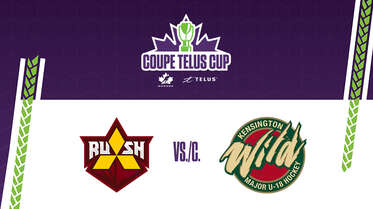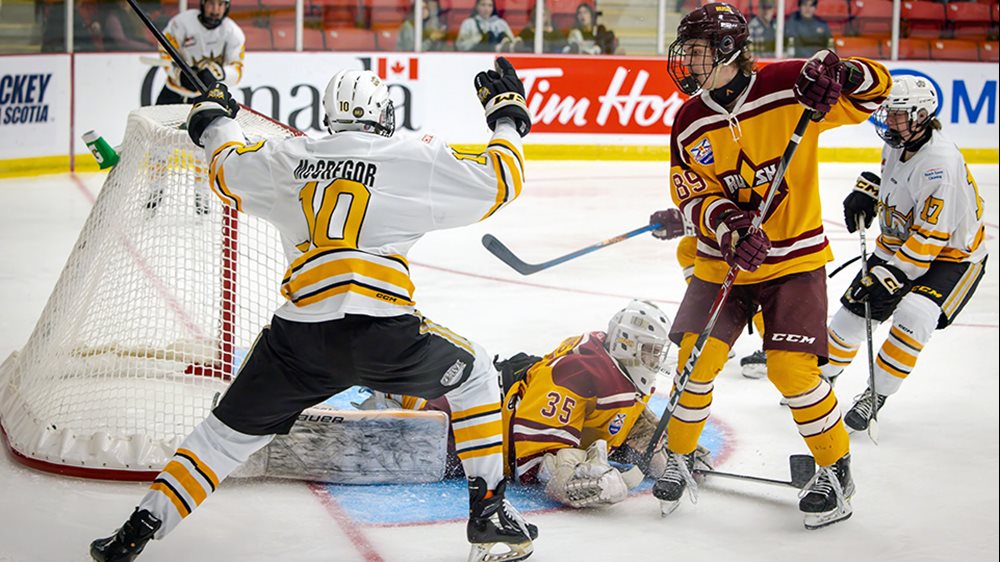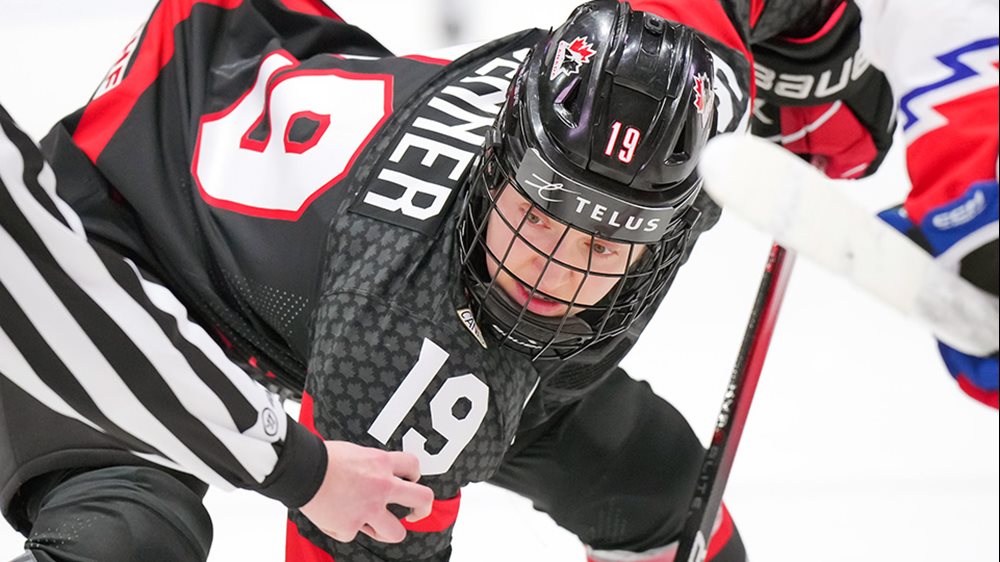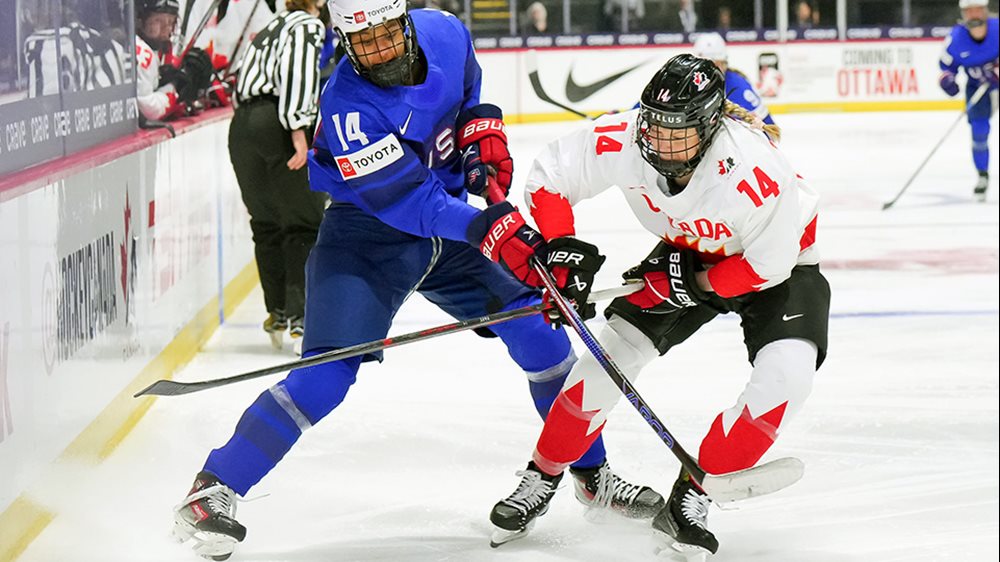
Power skills, power people
A hockey camp created by Wacey Rabbit and supported by the Indigenous Sport Council of Alberta is giving Indigenous kids a place to be kids
Hockey and community have always gone hand-in-hand for Wacey Rabbit. He remembers getting to the rink for one of his first practices was a family effort.
“My mom didn’t know how to put on my equipment, and I had a 6 a.m. practice, so we had to drive 20 minutes to my grandparents’ place,” Rabbit laughs. “So, I’m sitting there watching Saturday morning cartoons and eating my cereal while my grandparents are showing my mom how to put my equipment on.”
Those memories full of family and friends are the foundation on which Rabbit’s love for the game was built. The 34-year-old just finished his 15th season as a professional, the last three-and-a-half with the Jacksonville Icemen in the ECHL. But his experiences within the game didn’t always match his positive outlook. Rabbit remembers the first time he was exposed to racist and derogatory comments at the rink as a 10-year-old playing in his first major tournament away from the Kainai First Nation in southern Alberta.
“I remember talking to my parents and grandparents about it and my grandma said, ‘It’s not a reflection on you, it’s a reflection on them for what they’re saying. You be proud of who you are, and you be proud of where I come from.’ And I’ve taken those words with me everywhere I go,” Rabbit says.
“I’m a very proud First Nations man. I come from the Blood Tribe, I’m Blackfoot. For me to say those things and recognize those things, I hope that the next generation is proud that they can chase their dreams whether it’s on reserve or off reserve, whether it’s in academics, sports, whatever it is, whatever their passion is, that they believe in themselves to go and chase that.”
Rabbit is trying to support at least some of the dreams of Indigenous youth, by creating the WR20 Power Skill Hockey Camp and touring it around Alberta. (He has plans to take his camps to First Nations throughout the country when it is safe to do so.)
“We’re just trying to get the game out there and the wellness of sports and living healthy,” Rabbit explains. “Especially with COVID, you could see how hard it was on some of the younger kids … it was important that, even if it was just for an hour a day, these kids got to go on the ice and just be kids to help with their mental health.”
While some locations had to be moved or ice times adjusted to meet public health protocols, Rabbit managed to host camps in Kainai, Siksika and Frog Lake First Nations. At each stop, he recruited other Indigenous professional players to help, including Devin Buffalo.
“Just seeing him work with the kids in Frog Lake, you could tell, a lot of coaches don’t have that connection with the youth,” Buffalo says. “I was able to learn from him, to remember that for the youth, hockey is fun and to keep it fun not to make it too serious, and sometimes it is OK to make hockey playful and play games and just keep things light and fun.”
Captain Indigenous from Frog Lake First Nation WR20 Power Skill Youth Hockey Camp. Day 2 let’s roll ! pic.twitter.com/AE23yROvNf
— Wacey Rabbit (@WaceyRabbit20) October 31, 2020
Growing up, Buffalo says he knew Rabbit had a very successful junior career in the Western Hockey League (including a Memorial Cup in 2007 with the Vancouver Giants) and had gone on to play professionally, but didn’t really get to know him personally until they were both in the ECHL. With similar experiences in their past, Buffalo says Rabbit naturally became a mentor for him and has been a huge support in his own post-playing career, creating goalie camps focused on the development of Indigenous netminders.
“ [Now I’m] passing that on, creating players that are not just great hockey players but great people and students in the classroom,” says Buffalo, who earned a political science degree at Dartmouth College while playing for its men’s hockey team.
In addition to running his own camps, Buffalo works with the Indigenous Sport Council of Alberta. He says it was a great decision by the executive committee to name Rabbit a hockey ambassador for the Council.
“He was definitely someone who had all the attributes we were looking for in an ambassador and just the way he responds to the kids and all the kids he does work with have glowing reviews, so I think it was an easy decision,” Buffalo explains.
“Hockey is my passion, but my people are the most important thing for me – my family,” Rabbit says. “Hopefully in 10 years there’s a hundred kids in the NHL and we see a First Nations kid playing for the (Maple) Leafs, finally giving them their [Stanley] Cup, but he’s the captain raising the banner; that’s what I want for the next generation.”
Rabbit laughs while making the joke about the 54-year drought for the Leafs, but keeps smiling thinking about the possibilities for his people.
“For our next generation, I just want to make sure it’s an easier transition for them to get into sports, because at the end of the day sports is about community. It’s about coming together; it’s about having fun … so it’s about building community in sports. I think that’s the most important part.
“Everybody has a voice; everybody has a right to go play and feel like they’re accepted.”
More information on WR20 Power Skill Youth Hockey Camps can be found by following Wacey Rabbit on Instagram @wr20powerskills , and check out WaniskaMentality.com for more information about Devin Buffalo’s goaltender camps.
For more information: |
- <
- >

























